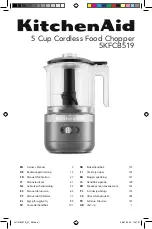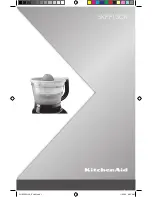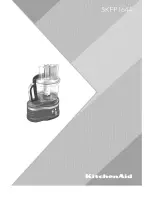
3-62
OPERATION
ORBAN MODEL 8500S
termination and works in close cooperation with the band-5 multiband clipper.
Functionally, this control is a mix control that adds a HF limiter gain reduction signal
to the band 4 gain reduction signal to determine the total gain reduction in band 5.
Higher settings produce more HF limiting.
This control does not affect the HD processing chain.
MB DownExpStCpl
(“Multiband Downward Expander Stereo Coupling”)
determines whether the multiband downward expander stereo coupler is on or off.
B1 / B2 Xover
(Band 1 to Band 2 Crossover Frequency) sets the crossover frequency
between bands 1 and 2 to either 100 Hz, 150 Hz, or 200 Hz. It significantly affects
the bass texture, and the best way to understand the differences between the two
crossover frequencies is to listen. The information found in
(starting on page 3-78) is also useful.
Band 1-5 MaxDeltGR
controls set the maximum permitted gain difference be-
tween the left and right channels for each band in the multiband limiter. The 8500S
uses a full dual-mono architecture, so the channels can be operated anywhere from
fully coupled to independent. We recommend operating the bands fully coupled
(
B
AND
1-4
M
AX
D
ELT
GR
= 0) for best stereo image stability. However, audio processing
experts may want to experiment with lesser amounts of coupling to achieve a wider,
“fatter” stereo image at the cost of some image instability.
Limiter Attack
controls allow you to set the limiter attack anywhere from 0 to
100% of normal in the Five-Band compressor / limiters. Because the limiter and com-
pressor characteristics interact, you will usually get best audible results when you set
these controls in the range of 70% to 100%. Below 70%, you will probably hear
pumping because the compressor function is trying to create some of the gain re-
duction that the faster limiting function would have otherwise achieved. If you hear
pumping in a band and you still wish to adjust the limiter attack to a low setting,
you can sometimes ameliorate or eliminate the pumping by slowing down the com-
pressor attack time in that band.
Delta Release
controls are differential controls. They allow you to vary the release
time in any band of the Five-Band compressor / limiter by setting an offset between
the
MB
R
ELEASE
setting and the actual release time you achieve in a given band. For
example, if you set the
MB
R
ELEASE
control to medium-fast and the
B
AND
3
D
ELTA
GR
control to –2, then the band 3 release time will be the same as if you had set the
MB
R
ELEASE
control to medium and set the
B
AND
3
D
ELTA
G
R
control to 0. Thus, your set-
tings automatically track any changes you make in the
M
ULTIBAND
R
ELEASE
control. In
our example, the release time in band 3 will always be two “click stops” slower than
the setting of the
MB
R
ELEASE
control.
If your setting of a given
D
ELTA
R
ELEASE
control would otherwise create a
release slower than “slow” or faster than “fast” (the two end-stops of
the
MB
R
ELEASE
control), the band in question will instead set its release
time at the appropriate end-stop.
Lookahead
activates or defeats the look-ahead functionality in the multiband com-
pressor / limiter. Defeating look-ahead improves transient impact at the expense of
distortion, particularly on speech. To mitigate this tradeoff, a selectable “auto”
Summary of Contents for OPTIMOD-FM 8500S
Page 1: ...Operating Manual OPTIMOD FM 8500S Digital Audio Processor Version 1 0 Software...
Page 7: ...Operating Manual OPTIMOD FM 8500S Digital Audio Processor Version 1 0 Software...
Page 26: ......
Page 56: ......
Page 164: ......
Page 308: ......
Page 310: ...6 28 TECHNICAL DATA ORBAN MODEL 8500S CONTROL BOARD PARTS LOCATOR...
















































